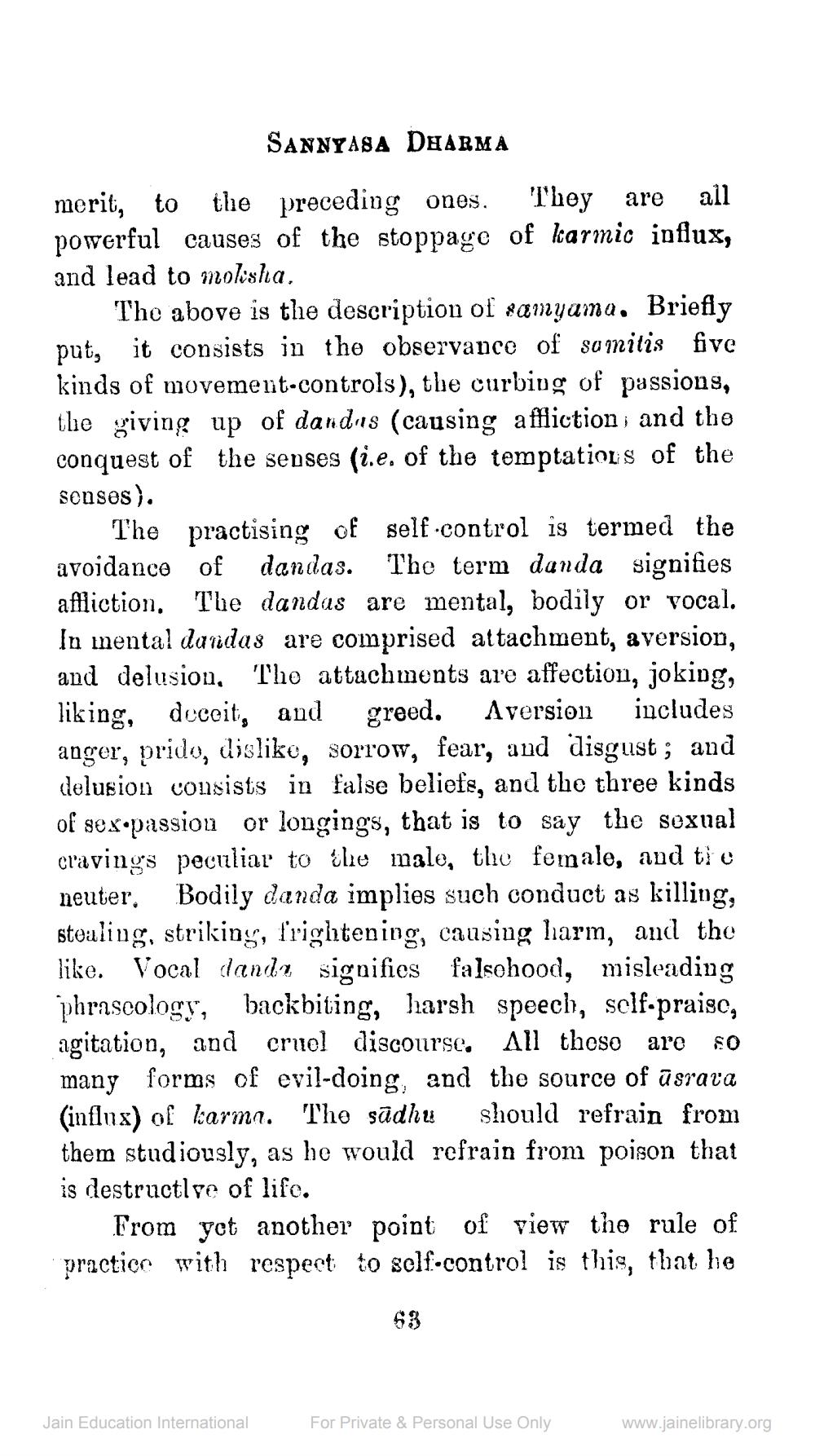________________
SANNYASA DHARMA
merit, to the preceding ones. They are all powerful causes of the stoppage of karmic influx, and lead to moksha.
The above is the description of ramyama. Briefly put, it consists in the observance of somitis five kinds of movement-controls), the curbing of passions, thie giving up of dandos (causing affliction and the conquest of the senses (i.e. of the temptations of the senses).
The practising of self.control is termed the avoidance of dandas. The term danda signifies affliction. The dandas are mental, bodily or vocal. In mental dandas are comprised attachment, aversion, and delusion, Tho attachments are affection, joking, liking, deceit, and greed. Aversion includes anger, prido, disliko, sorrow, fear, and disgust; and delusion consists in false beliefs, and the three kinds of sex.passiou or longings, that is to say the sexual cravings peculiar to the male, the female, and ti o neuter. Bodily danda implies such conduct as killing, stealing, striking, frightening, causing liarm, and the like. Vocal dand? signifies falschood, misleading phrascology, backbiting, harsh speech, self.praise, agitation, and cruel discourse. All theso aro so many forms of evil-doing, and the source of ūsrava (influs) of karma. The sādhu should refrain from them studiously, as he would refrain from poison that is destructive of life.
From yet another point of view the rule of practice with respect to self-control is this, that he
Jain Education International
For Private & Personal Use Only
www.jainelibrary.org




